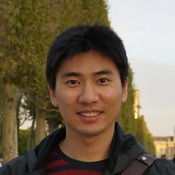Program Information
One-Step CT Reconstruction for Metal Artifact Reduction by a Modification of Penalized Weighted Least-Squares (PWLS)
H Kim*, J Chen , University of California San Francisco, San Francisco, CA
Presentations
MO-DE-207A-10 (Monday, August 1, 2016) 1:45 PM - 3:45 PM Room: 207A
Purpose: Metal objects create severe artifacts in kilo-voltage (kV) CT image reconstructions due to the high attenuation coefficients of high atomic number objects. Most of the techniques devised to reduce this artifact utilize a two-step approach, which do not reliably yield the qualified reconstructed images. Thus, for accuracy and simplicity, this work presents a one-step reconstruction method based on a modified penalized weighted least-squares (PWLS) technique.
Methods: Existing techniques for metal artifact reduction mostly adopt a two-step approach, which conduct additional reconstruction with the modified projection data from the initial reconstruction. This procedure does not consistently perform well due to the uncertainties in manipulating the metal-contaminated projection data by thresholding and linear interpolation. This study proposes a one-step reconstruction process using a new PWLS operation with total-variation (TV) minimization, while not manipulating the projection. The PWLS for CT reconstruction has been investigated using a pre-defined weight, based on the variance of the projection datum at each detector bin. It works well when reconstructing CT images from metal-free projection data, which does not appropriately penalize metal-contaminated projection data. The proposed work defines the weight at each projection element under the assumption of a Poisson random variable. This small modification using element-wise penalization has a large impact in reducing metal artifacts. For evaluation, the proposed technique was assessed with two noisy, metal-contaminated digital phantoms, against the existing PWLS with TV minimization and the two-step approach.
Result: The proposed PWLS with TV minimization greatly improved the metal artifact reduction, relative to the other techniques, by watching the results. Numerically, the new approach lowered the normalized root-mean-square error about 30 and 60% for the two cases, respectively, compared to the two-step method.
Conclusion: A new PWLS operation shows promise for improving metal artifact reduction in CT imaging, as well as simplifying the reconstructing procedure.
Contact Email:

